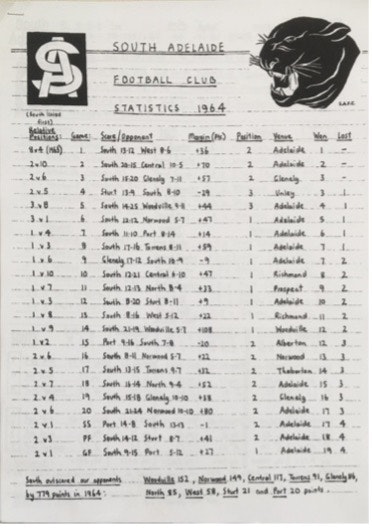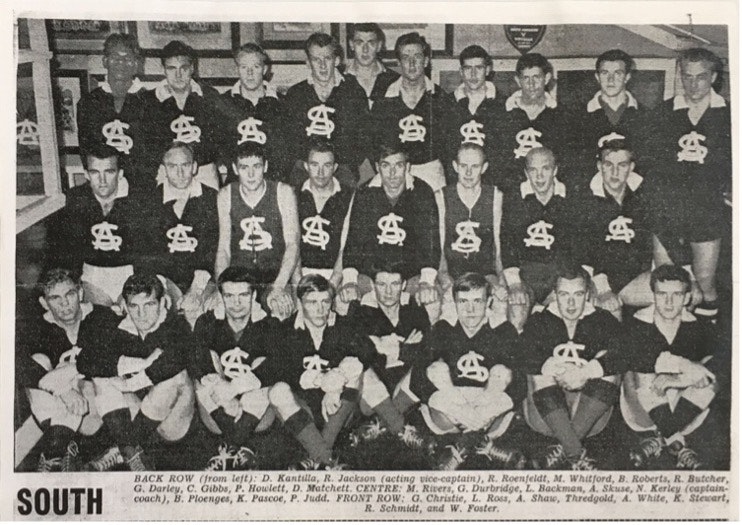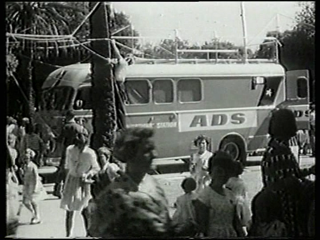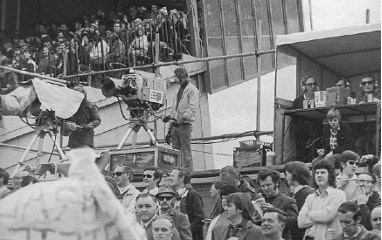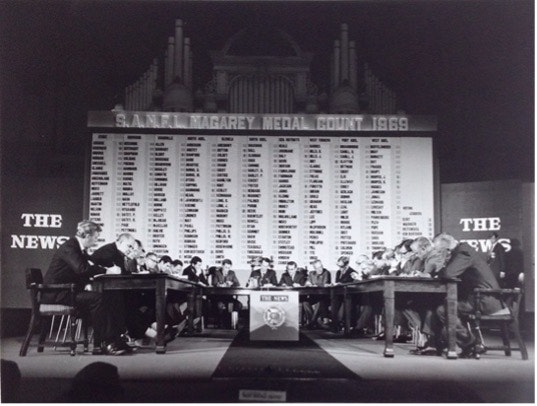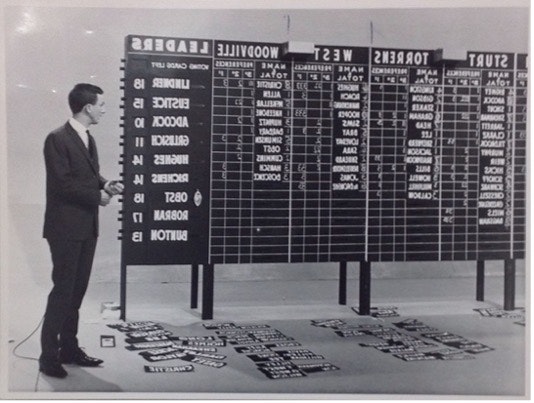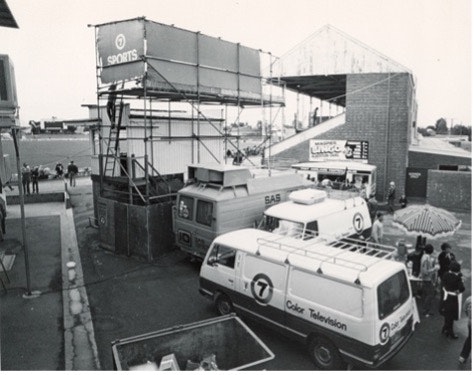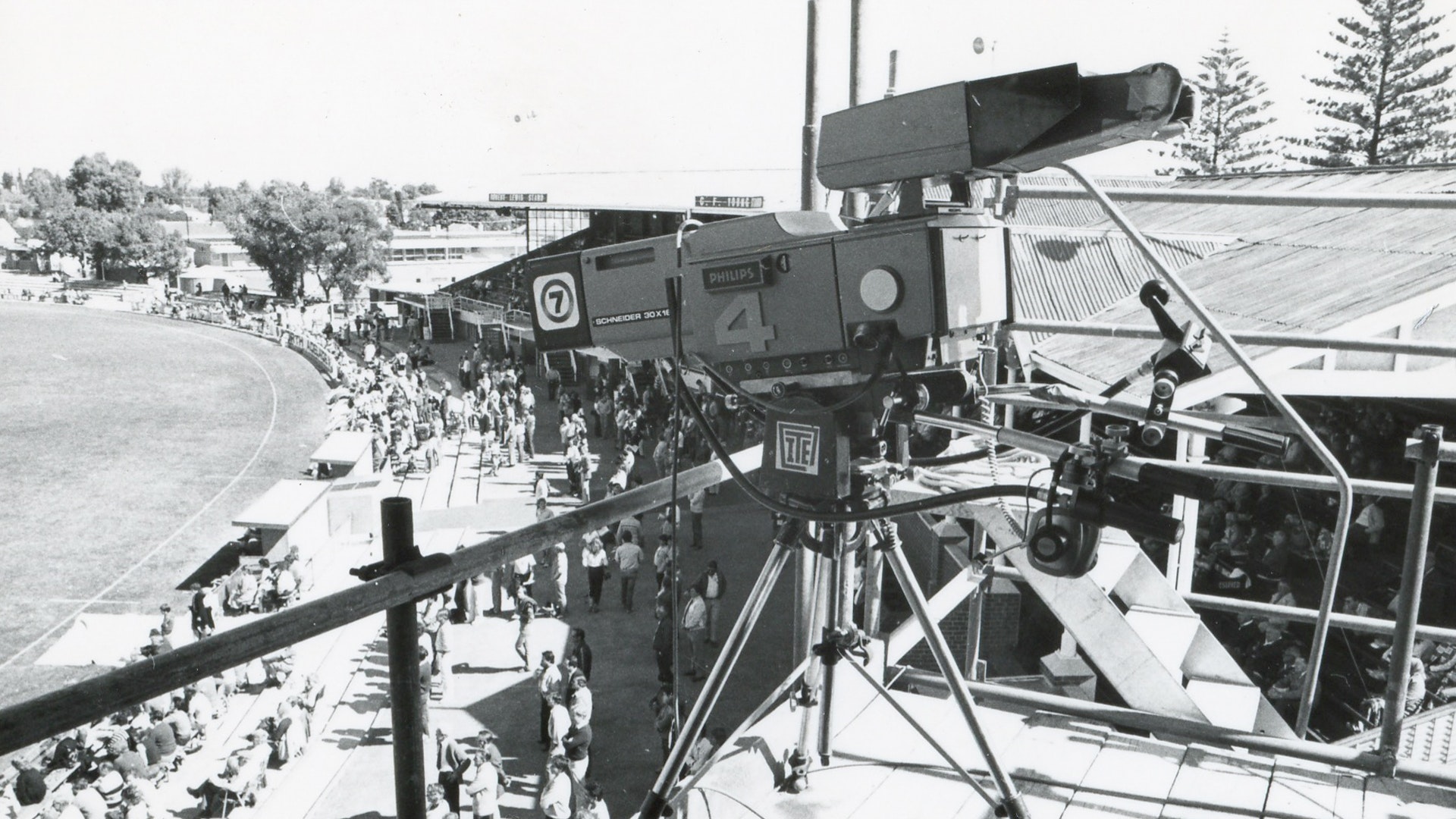
Footy and the Media, A personal reflection
By Ron Kandelaars
I’ve got a feeling, a feeling deep inside
Oh yeah, oh yeah
I’ve got a feeling, a feeling I can’t hide
Oh no, oh no, oh no
Lennon/McCartney from Let It Be album
I’ve got a feeling about the passions stirred by popular music and the unique brand of local football played by those god-like characters of the SANFL in the sixties and seventies. This feeling is not based on any empirical data, no conclusive sociological research or ground-breaking university thesis. No, it’s based on a hunch and growing up in Adelaide’s northern suburbs with my brothers and school mates. You see, my theory is that as we get older, we forget just how powerful these formative passions were and how they took shape much earlier than many of us think.
I was just seven when I first heard I wanna hold your hand by The Beatles on my mate’s portable record player in his backyard across the road from our house at Northfield. I loved this new up-beat sound. The perfect accompaniment to another all-encompassing obsession—the rise and rise of the Panthers under captain coach, Neil Kerley, in 1964. These blokes came from nowhere——bottom in fact—to claim the premiership against those who’d won too many: Port. It was enough to capture the imagination of a kid whose parents had come to Adelaide from Holland in the fifties as so-called ‘New Australians’. Soon, I had an intense need to collect football cards and bottle tops with names on them like Kantilla, Skuse, Darley and Ploenges.
One legendary broadcaster who remembers the phoenix-like rise of the mighty Panthers is Eldon Crouch. He was a fixture on our TV screens in the late sixties and early seventies as host of The Channel Nine Sports Show, later to become The Football Show. It was always local and live—and lively. Like in the heated discussion between Lindsay Head and hardman Wally May about the rising tide of ‘biffo’ across our suburban grounds. Lindsay said it had to stop. Wally took umbrage and the two locked horns over an incident from years before. Eldon Crouch remembers the exchange:
Lindsay said, ‘You should talk, Wally. You were one of the roughest players I’d ever seen.’ Wally bit back and said, ‘You broke three of my ribs.’
The incident happened at Adelaide Oval when Wally May saw his chance to take out the ‘Artful Dodger’—as Head was known—with a bone-crushing bump.
And, all of a sudden, in the crosshairs, I saw Lindsay Head and I thought, ‘This is my opportunity’. I charged full force and just at the last second, Lindsay jumped aside, and I crashed into the fence…and went over the pickets and broke three ribs.
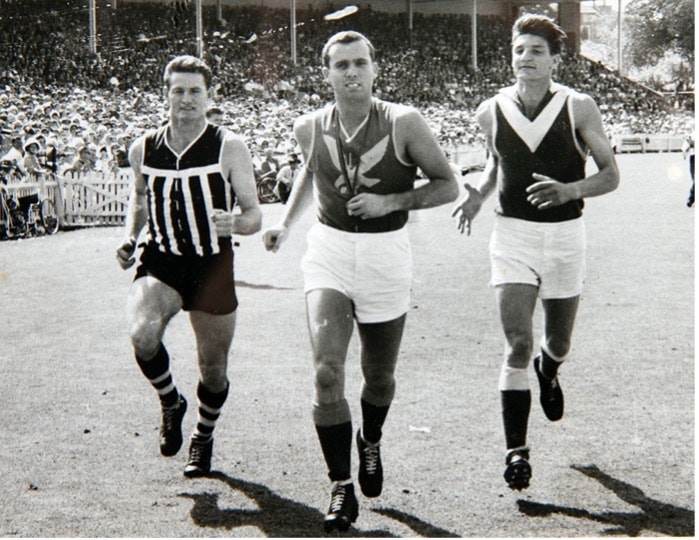
Yeah, you really got me now
You got me so I don’t know what I’m doin’, now—The Kinks
Like the Kinks, I was in a state of confusion by the mid to late sixties. South Adelaide was on the wane and a new force was on the rise—the mighty Double Blues. Sturt’s legendary coach, Jack Oatey, had put together a formidable unit that would win five premierships on the trot, consistently beating the mob that had won too many—Port.
As a football obsessed kid, I had to know more about Adonis-like characters with marvellous monikers such as ‘Diamond Jim’ Tillbrook. Also in the team, a few quietly spoken trainee clergymen who certainly didn’t turn the other cheek on the footy field. Sturt was changing our Australian game forever with a radical handballing style and the check-side goalkicking wizardry of diminutive geniuses like the late Peter Endersbee. Some of this stuff you had to see to believe. Television meant more of us could, as former camera operator and director, John Cronshaw, recalls:
We had three cameras on the football in those days. One was a wide-shot camera. The second camera was to pick up the close-ups of marks and ground play, and the third camera was used on the scoreboard because we didn’t have graphics generators then.
John also worked on the Sunday footy shows where many of the players who came into the studio were revered like gods in their suburban communities—but the remuneration was nothing like it is today:
They’re just names of the past now, most of those fellas. Gave it their all. Didn’t make much money out of it. There wasn’t much money to be made in football. A guy would come into the studio, and he’d win a bucket of Kentucky Fried Chicken (laughs) as the player of the day got a bucket of Kentucky Fried Chicken or something.
Most people I know think that I’m crazy and
I know at times I act a little hazy but
If that’s my way and you should know it then
In every way help me to show it—Billy Thorpe and the Aztecs
Billy Thorpe’s Aussie classic captured an era of self-expression and excess. Play it while watching an SANFL highlights reel and you get a sense of the seventies’ zeitgeist. These were ‘crazy’ days indeed when magicians like Paul Bagshaw could nonchalantly drop his ‘daks’ and dob a 40-metre check-side goal in the shadow of Adelaide Oval’s now defunct Creswell Stand. Days when Russel Ebert dominated, roaming at will, while bouncing across suburban grounds, picking up his obligatory 40 ‘touches’, many farmed out to teammates in a handballing style Russel made his own. He’s the only player to win four Magareys in a club that’s won too many— Port.
Eldon Crouch often compered the live Magarey Medal coverage, when the competition between television stations to get the first interview with the winner was intense. Eldon was Nine’s sports editor at the time, and he remembers ‘kidnapping’ the great Barrie Robran for an interview after his second medal win:
We got him away from Channel Seven. Seven had the TV rights from memory. I managed to get Barrie to come with me—away from Seven. Barrie was so shy back in those days and he knew me very well. Seven were very upset about it.
For the Kandelaars boys, this TV caper was a real winner. We could watch the reserves in the morning after our dad had already shuttled us around four northern suburbs footy grounds for Saturday games in the old Ford Falcon, stripped of its paint pots, ladders and ground sheets. By Saturday night, the Big Replay was ready to roll—roll being the operative word—as former camera operator and director, John Cronshaw, recalls:
In the early days we would show the reserves live but the replay of the league game would be transmitted from the suburban ground—bounced from Mount Lofty to the station—and recorded on two-inch tape. Segments containing the best bits of the game would be shown in a 48-minute package in the evening. I think the TV coverage started in about ‘64. In fact, I remember one state game from Adelaide Oval between SA and Victoria. We had a DC3 plane circling near Mount Gambier bouncing pictures from Adelaide to Melbourne. Back then, all this TV coverage was pioneering stuff. It was all pretty exciting because it was all new.
The weekend was a time when too much footy was barely enough. Saturday night, my brothers and I consumed the Victorian footy highlights show, The Winners, our one major concession to those playing across the border, who we came to both loathe and admire at state games. By Sunday morning—with Mass out of the way, because, yes, Nellie and Leo were determined to bring us up as good Catholic boys—the time was right for The Sunday Football Show.
Over the years, channels Seven and Nine had their own footy show versions, and we watched them all, while eating our lunch of baked beans on toast. Each show had its own stable of football characters. It wasn’t heady intellectual stuff—but, then again, it wasn’t meant to be. And yet some lines have been committed to memory by SANFL fans across the years, like this exchange between Sunday Sports Show hosts, Max Hall and Wally May:
“Comment Wally May?
No comment.
Good comment!”
You can’t always get what you want
But if you try some time, you just might find
You get what you need—The Rolling Stones
When Mick and Keith penned this classic, I’m sure they didn’t have the SANFL competition in mind. But these days when I hear that famous refrain, I can’t help but think of what once was. As the Kandelaars brothers sat glued to the telly on Saturday nights, I couldn’t get enough of the great Barrie Robran. Barrie would glide across Prospect Oval, weaving his magic and confounding his opponents.
I remember my dad rounding us up from the living room to the dining room table, ‘Your mother’s made a wonderful meal. Get in here and eat it.’ We’d dutifully sit down to dinner, but before too long Mum would ask, ‘Where’s your father?’ He’d taken one of our spots in the lounge room, hypnotised by the mercurial Barrie Robran, who had not only mesmerised another packed Prospect crowd, his team-mates, and the opposing team, but also my old man. There was no-one quite like the famous number 10 in the red and white Rooster’s guernsey.
As part of the 2022 SANFL exhibition, you can now see ‘Bazz’ in colour thanks to the relentless push over the years to enhance footy coverage with better technology. Electronics company, Marconi, loaned cameras to Channel Nine in 1972 as the station prepared for colour and they captured that year’s Grand Final in the most vivid way. The fact that we can now see this colour version half a century later, is due in part to retired camera operator and director, Rob Fletcher, asking a colleague what was going to happen to the tapes:
He said throw ‘em in the bloody bin, it’s all done now. It doesn’t matter.
Thankfully, Rob knew their significance and transferred them from two-inch tape to one-inch tape. He also remembers the battle for footy coverage rights:
Nine had the sole rights in 1972, 1972 and 1974. Then colour came in and three stations, Nine, Seven and the ABC, did it. After that, it went to Channel Seven. And then it went back to Nine in 1980 and 1981.
Nine went out and bought eight one-inch machines in the eighties in one hit—a graphic unit and a heap of other stuff. Basically they got them because the Americans boycotted the Russian Olympics, so there was a surplus of equipment. One-inch machines meant you could do slow-mo replays. It also had a graphic stick in it so you didn’t have to shoot the scoreboard anymore, and you could put player names up on screen. It was actually good fun. We were always so busy you didn’t have time to complain—it was head-down-bum-up.
The highlights of the sixties and seventies rolled on into the eighties, when the prospect of Adelaide teams entering the AFL behemoth loomed large. Perhaps all this was inevitable and as Mick and Keith wrote you don’t always get what you want but ‘you get what you need’. Still, for many of us, love runs deep for the glory days and a truly local competition.
Related News
-
 History
HistoryIn the Spotlight – Footy Park lights up in 1984
-
 History
History70 Years in SA Footy – John Halbert
-
 History
HistoryInto another zone – 1984 Preliminary Final
-
 History
HistorySuper SANFL Semi-Finals
-
 History
HistoryJohn Roberts’ Sweet 16
-
 History
HistoryPayne’s high five
-
 History
HistoryBruce loves the nightlife
-
 History
HistorySouth back from the brink

